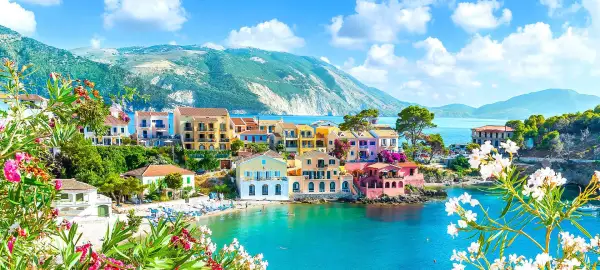Tourcode: IG10
- Overview
- Info & Inclusions
- Itinerary
- Map & Hotels
- Photos
- Dates & Prices
- Max Group Size 18
- Explore the charming villages and stunning scenic countryside of the Ionian Islands
- Discover beautiful sandy beaches and crystal-clear waters
- Admire the unique Venetian architecture and historic landmarks
- Experience the distinct cultural identity shaped by Italian influences
- Enjoy the local cuisine and musical traditions
- Singles friendly (view options for single travellers)
If you’ve been to the more visited islands of the Cyclades – Mykonos, Santorini, Milos etc – and think you’ve “been to the Greek Islands,” think again! The Ionian Islands are a world unto themselves and very much worthy of your time on the “other side” of this stupendously varied and beautiful country.
- MealsSavour authentic flavours with included daily breakfasts and dinners at handpicked local restaurants—immersing you in local cuisine without worrying about reservations or budgets.
- Transport & Logistics
Private air-conditioned coaches and included internal ferries and flights—ensuring hassle-free travel so you can focus entirely on the discoveries ahead.
"Adventures Abroad tour leader's management and guest services managed the tour with great skill and dedication. The tour leader was on top of every move and transfer. We have not experienced any issues with logistics and had a great time."
~ JULIA O"The tour leader did an excellent job coordinating some difficult travel logistics, power outage issues and resolving problems and dealing with guests who had unrealistic expectations."
~ CYNTHIA COLLINS - Expert Guidance
Unlock insider secrets at every landmark with your full-time Tour Leader and expert local guides , all gratuities covered—no hidden tipping surprises—so you immerse fully in your destination's stories, worry-free. (Except for the tips to your tour leader at the end of your tour.)
"Amazing tour guide. Our tour guide was very well organized, Her passion, knowledge, and enthusiasm completely transformed the travel experience into something truly unforgettable..."
~ MELANIE LEMAIRE"Highly recommend every trip with Adventures Abroad. It's a well organized and well thought out adventure. The tour leaders are friendly, knowledgeable and experienced professionals. Highly recommend this company."
~ SUSAN WALL - Sightseeing & EntrancesAll entrance fees for sites visited as per the itinerary—no hidden costs—so you can explore ancient ruins and excursions with complete peace of mind.
- AccommodationsUnwind in clean, well-located 3 to 4-star hotels with private en suite facilities—handpicked for comfort and convenience after each day's discoveries—so you can rest easy knowing your stay supports the real adventure, not steals the spotlight.
- Small Group
Discover the world in small groups of up to 18 travellers plus your expert Tour Leader—unlocking spontaneity, off-the-beaten-path adventures, and genuine connections at a relaxed pace, free from crowds.
"Looking Forward to My Next Adventure The best feature of the Adventures tour was the small size that allowed the group to quickly load up, let everyone get acquainted within the first 24 hours, capitalize on unplanned surprises along..."
~ PHILIP BLENSKI"Good value for a great time I have traveled with Adventures Abroad for over 20 years now. Well thought out, interesting itineraries and the other travelers congenial and friendly. The price always seems fair and overall a..."
~ Trusted Customer - Airport Transfers For Land & Air CustomersWe handle hassle-free airport transfers for all our land and air tour customers—plus early arrivals or late departures when you book extra hotel nights directly with us for added peace of mind.
- International airfare to/from the tour.
- Tour Leader gratuities, lunches, personal items (phone, laundry, etc), and excursions referenced as 'optional'.
- Airport transfers for Land Only customers.
- Travel insurance.
- Seasonality and Weather:
May and Early September are excellent times to visit the Ionian Islands, offering warm, pleasant days with gentle breezes and long daylight hours. These shoulder seasons bring comfortable conditions for walking, sightseeing, and outdoor dining, without the intense heat of midsummer.
In May, the islands are lush and green from spring rains, with wildflowers blooming across hillsides and olive groves looking their best. While the sea is still cool for swimming, the weather is perfect for boat trips and coastal exploration.
In early September, you'll enjoy the warmest sea temperatures of the year, perfect for swimming and water activities, while the summer heat begins to moderate into more comfortable levels. The landscape retains its Mediterranean beauty, and the extended daylight hours continue to provide ample time for exploration.
These shoulder seasons mean fewer crowds and a more genuine experience of local culture, while still enjoying reliably sunny weather. Overall, both May and early September offer ideal conditions for discovering these islands in comfort, with the perfect balance of pleasant weather and authentic Greek island atmosphere.
. - Transport and Travel Conditions:
This is not a cruise! We travel to/between islands via local ferries, which can range from hydrofoils to large vehicle carrying vessels. Uncontrollable factors such as weather may result in delays & Greek ferry schedules tend to change without notice; some itinerary adjustments may be necessary with late notice.
Land transport (city & island tours, port transfers) by private air-conditioned coaches, minibuses and vans, depending on group size (see 'group size'). Locally we may make short hops using multiple local taxis. We do not have the same bus at our disposal for the entire journey.
Porter service is rarely available on the islands (see 'inclusions'); you MUST be independent with your luggage, especially getting on/off ferries and at hotels.
Difficulty rating #2: This trip is typical of most of our European tours, which are ambitious and involve full days of travel and sightseeing. While we don't have any actual strenuous activity (ie hiking) built into the program, you will do a lot of walking on this trip, mostly be in the form of walking tours of towns and cities and short walks to dinner. Being Europe, and a hilly/mountainous area, cobbles, uneven surfaces, and slopes/stairs are common.
If you are accustomed to typical "bus tours," which rely heavily on vehicular transport for all sightseeing activities, you should be aware that this tour is considerably more active.
This program also has a strong gastronomic element, well-suited to "foodies," expert or novice, and those who enjoy savouring and lingering over a meal and sampling new things. While vegetarians are well catered for, we regret that very specific or extremely limited dietary restrictions/preferences may present a challenge on this trip.
Am I suitable for this tour? Please refer to our self-assessment form - Activity Level: 2
These are particularly busy tours that feature a lot of moving around, sometimes by train and short journeys on local transport. Walking tours of towns and cities are leisurely but you should be prepared to be on your feet for several hours. Some of our cultural trips that occur at high altitude and/or require greater independence with baggage handling (at hotels, airports, train stations) also fall into this category.
To learn more about the Activity levels, please visit our tour styles page. - Accommodation:
Our accommodation choices reflect the charm and spectacular views of for which the Greek Isles are famous. Large chain hotels are rare in the Ionian, and most hotels are still smaller, family-run establishments. Our mid-range (international 3-star standard) island properties feature private bath, air-conditioning, wifi, and in-house breakfast.
Click on the "Map & Hotels" tab for more information. - Staff and Support:
Full-time Tour Leader, local step-on local guides in various locations - Group Size:
Maximum 18 plus Tour Leader
- Day 1:Arrival in CorfuWelcome to the Ionian Islands, where Venetian bells still echo across harbour squares and olive groves shimmer silver in the Mediterranean light. Our odyssey begins on Corfu, the emerald jewel that Homer called a "distant paradise" and Shakespeare immortalized as his magical isle in The Tempest.
Unlike the rest of Greece, Corfu never fell under Ottoman rule. Instead, four centuries of Venetian governance, followed by French and British periods, created a unique cultural fusion that feels more Italian Riviera than Aegean Greece. The successive Western influences shaped everything from the architecture of its UNESCO-listed capital to the musical traditions that still fill its kafeneions.
As evening settles over the Ionian Sea, we gather for our welcome dinner, beginning a journey through islands where each destination tells a different chapter of Mediterranean history. Tomorrow, we'll discover why the Venetians called this place the key to the Adriatic.
Overnight on Corfu.
Included Meal(s): Dinner, if required - Day 2:Corfu Town & FortressThis morning we step into the living museum of Corfu's Old Town, where narrow kantounia (alleyways) wind between Venetian mansions and Byzantine churches. Our walking tour reveals why UNESCO recognized this remarkable place—it's the most complete example of Venetian urban architecture in the Eastern Mediterranean.
We explore the imposing Old Fortress, built on a strategic promontory that has defended this harbour for over a millennium. Originally a Byzantine stronghold, the Venetians transformed it into an impregnable bastion with ingenious engineering that includes a man-made moat carved from solid rock. From its ramparts, we understand why Corfu controlled the entrance to the Adriatic for centuries.
The maze-like Campiello district unfolds before us—secret garden squares appear around every corner, chapels hide in shadowed alcoves, and the famous Liston arcade echoes with the conversations of locals enjoying their afternoon coffee. This elegant promenade, modeled after Paris's Rue de Rivoli, was once reserved exclusively for Corfu's nobility.
The balance of the afternoon is yours to wander these enchanting streets, perhaps sampling the local kumquat liqueur or discovering hidden shops selling wild honey and handmade lace.
Overnight Corfu
Included Meal(s): Breakfast and Dinner - Day 3:Corfu Island DiscoveryWe venture beyond the capital to discover the island's most dramatic landscapes and ancient mysteries. Our first stop at Kanoni Peninsula reveals the panoramic view that has graced countless postcards—tiny Mouse Island (Pontikonisi) sitting in the turquoise lagoon like a green jewel. According to Homer's Odyssey, this islet is actually Odysseus's ship, turned to stone by the vengeful Poseidon.
At the Corfu Archaeological Museum, we uncover the island's pre-Venetian past through remarkable artifacts spanning three millennia. The star attraction, the Gorgon Pediment from the Temple of Artemis, represents one of the finest examples of Archaic Greek sculpture.
We then journey to Paleokastritsa, where dramatic limestone cliffs plunge into waters so clear they seem like liquid sapphire. The 13th-century monastery perched on its rocky peninsula has watched over fishing boats and Byzantine galleys alike. Local legend claims this bay is where Odysseus first encountered the beautiful princess Nausicaa—a meeting that represents literature's earliest tale of unrequited love.
Our final ascent to Lakones village, 180 metres above the sea, delivers what Lawrence Durrell called "the most beautiful view in the Mediterranean"—a panorama so breathtaking that locals named it the "Balcony of the Gods."
Overnight Corfu
Included Meal(s): Breakfast and Dinner - Day 4:Corfu - Ferry to PaxiToday we travel by local ferry to the island of Paxi (aka Paxoi or Paxos).
In doing so we experience a major shift of gears, exchanging the largest, most-developed and visited of the Ionian islands, with a destination that couldn’t be any more of a contrast: the island of Paxi, the smallest and one of the least-developed (excluding those islets within the group that are uninhabited). According to Greek myth, Paxi was created when Poseidon slammed down his trident on Corfu, chipping off this eight-mile-long chunk of chalky, olive-grove-covered rock. Though Paxi is located only 15 km south of Corfu, it might as well be 1,000 -- it’s quaint and cozy, with picturesque fishing villages and extensive ancient olive groves divided by stone walls. This is about as laid-back as it gets.
We will aim, of course, for a direct link; however, please note that we may sail first to the nearby mainland port of Igoumenitsa and connect onward from there. Accordingly, some may wonder why we include this tiny island on our program, and it essentially comes down to two things: 1) culturally and visually, it’s for a taste of Greek island life from days-gone-by, and 2) if you look at a map, it makes logistical sense. The distance between Corfu and the larger islands to the south is considerable, and Paxi conveniently allows us to break up an otherwise 7-8 hour ferry crossing to Lefkada.
In the spirit of the local custom, our time and activities here are somewhat free-form, with an intent to showcase this pretty place in a way that sets the stage for other islands yet to come. One of the greatest joys and rewards from island hopping in this part of the world is that each place is unique in its own special way, which forms the basis of one of the more compelling themes that tie this itinerary together.
Today upon arrival, we should be able to visit the main town of Gaios and possibly (perhaps tomorrow) accomplish a leisurely (and optional) one-hour point-to-point walk of about 3km (with vehicle support). From the small coastal settlement of Loggos the route ascends (+/- 120m) to the small village of Mastoratika -- the view to the and the green surroundings is amazing. From here the route descends to the sea, reaching Monodendri Beach with stunningly clear blue waters.
More info at https://www.alltrails.com/greece/paxos - “Loggos - Monodendri Beach”
This evening we enjoy a group dinner on an island with an abundance of fresh and tasty Mediterranean vegetables, herbs, fruits, seafood, and meats all kissed by the Ionian sun and blessed by the local micro-climate. The food alone is a reason to visit this place.
Overnight on Paxi.
Included Meal(s): Breakfast and Dinner - Day 5:Paxi Boat Trip & Leisure TimeThis morning we take to the sea aboard a private boat, exploring Paxi from the perspective that reveals its true character. The island's coastline tells a geological story written in dramatic white cliffs and hidden caves carved by millennia of Ionian storms.
We cruise to Anti-Paxos, the even tinier satellite island famous for its otherworldly blue caves and beaches with sand like crushed pearls. The contrast of turquoise water against white limestone creates an almost tropical paradise that feels impossibly remote. Local fishermen still harvest the tiny island's grapes to produce a distinctive red wine found nowhere else.
A Venetian fort watches over Gaios harbour from its rocky islet, a reminder of when these waters required constant vigilance against Ottoman raids. As we anchor in secluded coves accessible only by sea, we understand why Paxi became a refuge for those seeking escape from the tumultuous history of larger islands.
Back on Paxi, we enjoy lunch at a waterfront taverna where the catch of the day comes from boats we can see bobbing in the harbour. The afternoon unfolds at Paxi pace—perhaps a swim in crystalline waters, a stroll through olive groves divided by ancient stone walls, or simply the pleasure of watching island life flow around a harbour café.
Overnight on Paxi.
Included Meal(s): Breakfast and Dinner - Day 6:Paxi - Ferry to LefkadaWe sail south across deeper Ionian waters toward Lefkada, one of Greece's most dramatically beautiful islands. The three-hour journey* allows us to appreciate the geographic logic of our island-hopping route—each destination represents a different chapter in the complex story of Ionian history and culture.
Lefkada stands apart among Greek islands as the only one connected to the mainland by a causeway, a feature that has shaped its unique character. Where other Ionian islands developed in splendid isolation, Lefkada maintained constant connection with mainland Greece, creating a fascinating blend of island mystique and continental accessibility.
As we approach the island's mountainous silhouette, we can already see why this destination attracts a different type of traveller. Lefkada promises some of the most spectacular beaches in the Mediterranean, hidden in coves where turquoise water meets limestone cliffs, alongside traditional mountain villages where island life continues much as it has for centuries.
We'll likely base ourselves near Vasiliki in the island's south, perfectly positioned for tomorrow's explorations and conveniently located near the ferry port that will carry us onward to our next island adventure. The evening settles gently over an island that promises to reveal yet another facet of Ionian character.
Overnight Lefkada
* Please note that the sailing times indicated in this itinerary are estimates based on historical norms and scheduling. Some adjustments may be necessary.
Included Meal(s): Breakfast and Dinner - Day 7:Lefkada Island TouringOur exploration begins in Lefkada town (Chora), where the medieval Castle of Agia Mavra guards the narrow causeway that links island to mainland. Built by Frankish crusaders in 1294, this fortress protected not just Lefkada but the entire region from seaborne invasions. The massive walls remind us that these peaceful waters once required constant vigilance.
The town's Archaeological Museum reveals Lefkada's deeper past through artifacts spanning from Paleolithic settlements to Roman villas. In four compact rooms, we trace human habitation across millennia, understanding how this strategic location attracted settlers from the earliest times.
We then venture inland to discover the Nydri waterfalls, where mountain streams cascade through lush forests—a refreshing contrast to the sun-baked coastal landscapes. The hike through verdant gorges reveals Lefkada's surprising ecological diversity, where Mediterranean scrubland gives way to almost alpine environments.
Our mountain journey continues to Exanthia village, perched high above the Ionian Sea with panoramic views that stretch to distant islands. Here we sample local wines produced from grapes that benefit from both mountain cool and sea breezes. We conclude in Englouvi, at 700 metres elevation the highest inhabited village on Lefkada, famous throughout Greece for producing the finest lentils in the Mediterranean—celebrated each August with a festival that draws visitors from across the islands.
Overnight Lefkada
Included Meal(s): Breakfast and Dinner - Day 8:Lefkada - Ferry to IthakiA relatively short ferry crossing brings us to Ithaki, the legendary homeland of Odysseus and perhaps the most symbolically significant island in our journey. While the name resonates with anyone familiar with Homer's epic, the modern island reveals itself as one of the Ionian's best-kept secrets—largely undiscovered by mass tourism yet rich in both mythological significance and rugged natural beauty.
Ithaki embodies the symbolic meaning of journey's end, representing homecoming after long adventure. For Odysseus, reaching Ithaki marked the completion of his ten-year odyssey; for us, it offers the chance to explore an island where myth and landscape intertwine in extraordinary ways.
We ascend to Moni Katharon, the Monastery of Panagia Kathariotissa, built in the late 1600s at 600 metres elevation on the peak Homer called Mount Nirito. From this dramatic perch, we survey not just the southern reaches of Ithaki but distant Kefalonia across the straits—views that help us understand the strategic importance of these waters in ancient times.
The monastery's peaceful courtyards and Byzantine frescoes provide a contemplative introduction to an island that invites slower exploration. As evening falls over the picturesque port of Vathi, nestled in one of the Mediterranean's most perfectly protected natural harbours, we prepare for tomorrow's deeper dive into the landscape of legend.
Overnight Ithaki
Included Meal(s): Breakfast and Dinner - Day 9:Ithaki - Following OdysseusToday we walk in the footsteps of literature's most famous traveller, exploring archaeological sites that may indeed be the locations described in Homer's epic. The Ancient Acropolis of Aetos, dramatically positioned atop a clifftop peninsula, represents one of the most significant archaeological sites in the Ionian Islands.
Tradition identifies these impressive ruins as the remains of Odysseus's palace, and recent excavations have revealed substantial Bronze Age foundations that align remarkably well with Homer's descriptions. Standing among these ancient stones, with commanding views across the channel to Kefalonia, we can almost envision the moment when the disguised hero finally revealed himself to his faithful wife Penelope.
The island's network of ancient paths offers some of the finest walking in the Ionian Islands, threading through landscapes that have changed little since Homer's time. Olive groves cascade down hillsides toward hidden coves, while traditional stone walls trace boundaries established centuries ago. These aren't tourist trails but working paths still used by locals, offering authentic glimpses of island life.
Our afternoon remains flexible—perhaps exploring Vathi's charming Archaeological and Ethnographic Museum, housed in traditional buildings around the port, or simply enjoying the profound peace of an island where the modern world feels refreshingly distant. The evening light over Ithaki's rugged coastline creates moments of pure magic that explain why this place has inspired poets for three millennia.
Overnight Ithaki
Included Meal(s): Breakfast and Dinner - Day 10:Ithaki - Ferry to KefaloniaWe ferry across the narrow straits to Kefalonia, the largest and most diverse of the Ionian Islands. The 2.5-hour crossing allows us to appreciate how these islands, despite their proximity, each developed distinct characters shaped by geography, history, and the particular mix of civilizations that touched their shores.
Kefalonia immediately announces its different scale and ambition. Where Ithaki whispers its stories, Kefalonia speaks boldly through dramatic landscapes, substantial towns, and a wine-making tradition that dates to ancient times. The island's size—nearly ten times larger than Paxos—supported a more complex society that survived historical upheavals to maintain traditions lost elsewhere.
Our introduction begins at the Robola Winery Cooperative, where we discover one of Greece's most distinctive wines. Robola grapes, grown exclusively on Kefalonia's limestone slopes, produce wines that Venetian merchants prized highly enough to export throughout their Mediterranean empire. The cooperative, established in 1983, continues traditions that stretch back over seven centuries.
The afternoon allows us to settle into Argostoli, Kefalonia's bustling capital, rebuilt after the devastating 1953 earthquake that leveled most traditional architecture. Despite this tragedy, the town maintains its essential character as a working Greek port, where fishing boats share the harbour with ferries connecting to Athens and Italy. The evening brings our first taste of Kefalonian cuisine, renowned throughout Greece for its hearty mountain dishes and exceptional local ingredients.
Overnight Kefalonia
Included Meal(s): Breakfast and Dinner - Day 11:Kefalonia's Geological WondersKefalonia's limestone landscape has been sculpted by underground rivers into some of the Mediterranean's most spectacular geological formations. We begin at Drogarati Cave, descending into chambers more than 150 million years old where stalactites and stalagmites create natural cathedral architecture. The cave's remarkable acoustics have been tested by concerts—Maria Callas herself performed here, her voice resonating through chambers that amplify sound with perfect clarity.
Our next wonder, Melisani Lake, represents one of the world's most extraordinary underground lakes. We glide across turquoise waters in small boats, entering chambers where sunlight streams through a collapsed roof to illuminate depths that reach 39 metres. Archaeological excavations around the lake have revealed artifacts from the 4th and 3rd centuries BC, suggesting this was once a sacred site dedicated to the god Pan and the water nymphs.
The afternoon brings us to Assos, a village that appears almost to float on its own private peninsula. Pretty pastel houses nestle against a dramatic headland crowned by a massive Venetian castle—one of the largest and most imposing fortifications in the Ionian Islands. The castle's massive walls, built to withstand Ottoman sieges, now frame breathtaking views across waters that shift from deep blue to brilliant turquoise.
From Assos's elevated position, we understand how Kefalonia's strategic location made it a crucial link in Venetian trade routes, requiring the massive investment in fortifications that still dominates the landscape today.
Overnight Kefalonia
Included Meal(s): Breakfast and Dinner - Day 12:Kefalonian Flavours & FarewellThis morning we embark on a culinary journey that reveals why Kefalonia has earned recognition as one of Greece's premier gastronomic destinations. Our food tour, led by passionate locals, introduces us to flavors that reflect the island's unique position at the crossroads of Mediterranean cultures.
We sample Kefalonia's famous cheeses, aged in caves that maintain perfect temperature and humidity year-round. The local cod preparation, influenced by centuries of Venetian rule, demonstrates how Italian techniques merged with Greek ingredients to create distinctive island specialties. Local wines complement every tasting, from the crisp Robola whites to rich reds produced from indigenous varieties found nowhere else.
The island's olive oil, pressed from trees that survived the 1953 earthquake, carries flavors intensified by limestone soil and constant sea breezes. We taste honey harvested from wildflower meadows and nuts from mountain groves, understanding how Kefalonia's diverse microclimates support exceptional local products.
Our afternoon offers final opportunities to explore Kefalonia at leisure—perhaps walking across De Bosset Bridge, the world's longest stone bridge over the sea, or visiting the Archaeological Museum to see Mycenaean treasures that illuminate Bronze Age civilization. As evening approaches, we gather for our farewell dinner, celebrating a journey that has taken us through five distinct island worlds, each revealing different facets of Ionian culture and history.
Overnight Kefalonia
Included Meal(s): Breakfast, Lunch and Dinner - Day 13:Departure from KefaloniaOur Ionian odyssey concludes as we transfer to Kefalonia Airport for onward flights. From here, connections are available to Athens for international departures, or direct international flights depending on the season.
As we depart, the view from the aircraft window provides a final perspective on our island-hopping route—the emerald dots scattered across brilliant blue waters that have sheltered civilizations, inspired poets, and created some of Europe's most distinctive cultures. The Ionian Islands have shared their secrets generously, from ancient archaeological sites to family farms, from dramatic geological wonders to quiet harbour moments that define the authentic Greek island experience.
KALO TAXIDI! (Good Journey!)
Included Meal(s): Breakfast
Countries Visited: Greece
*The red tour trail on the map does not represent the actual travel path.
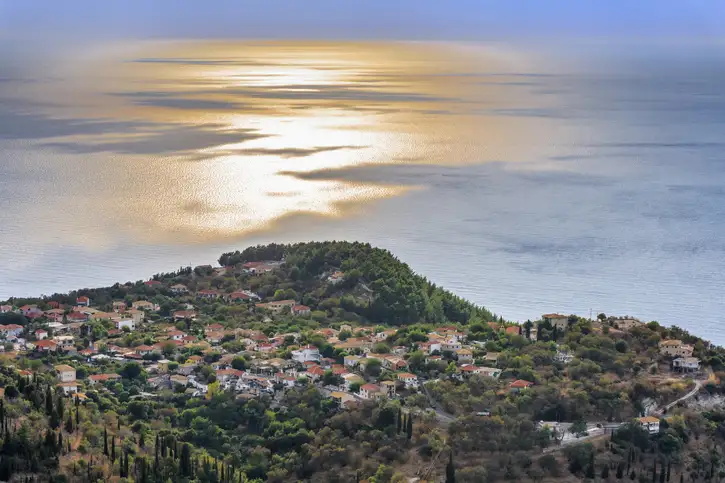
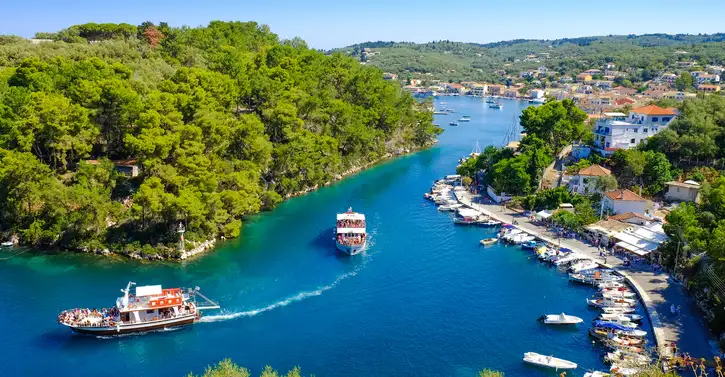
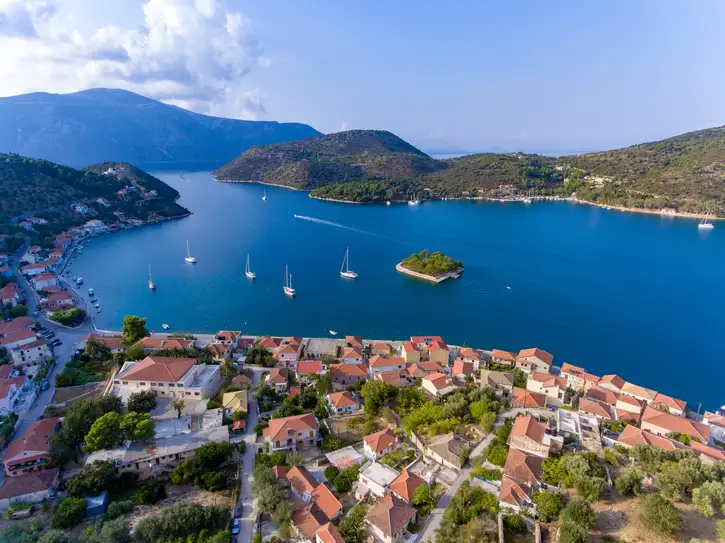
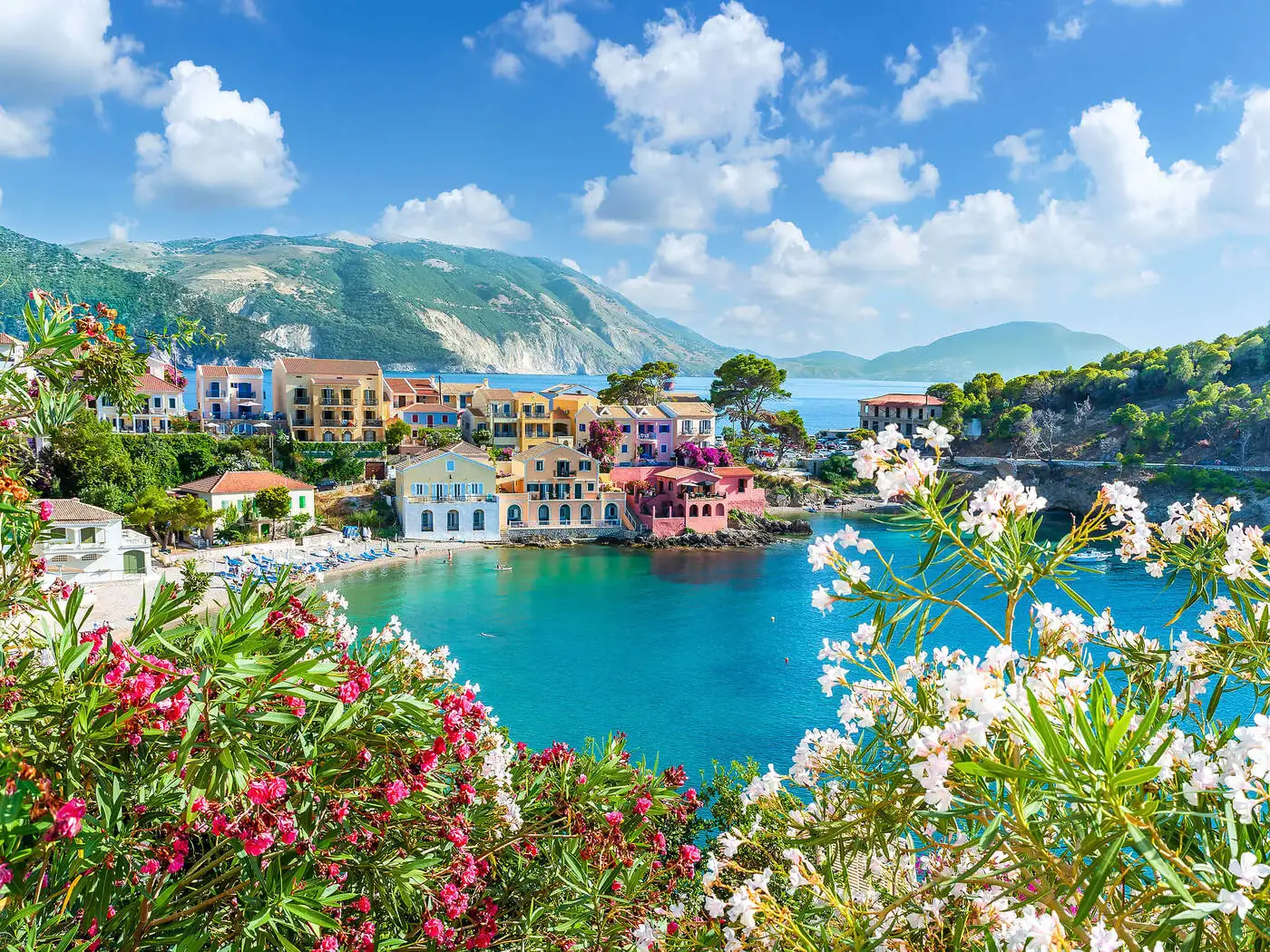
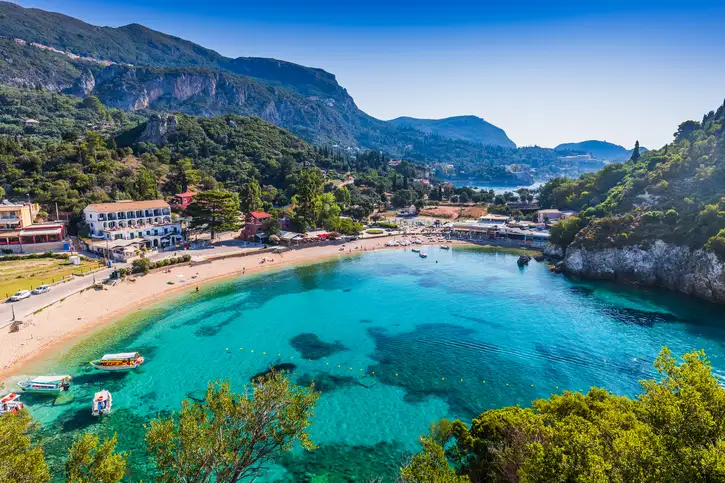
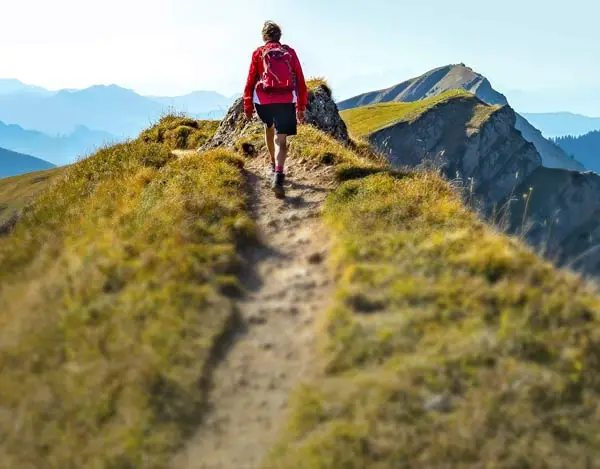
Book This Tour
- Final payment: Due 90 days prior to departure.
- Deposit: A non-refundable $500 USD Deposit is required at booking.
- Optional Single Supplement: $1320 USD (number of singles limited).
(View options forsingle travellers) - Transfering Tour or Date: Transferring to another tour or tour date is only permissible outside of 120 days prior to departure and is subject to a $100 USD change fee.
(Read our cancellation policy)
Prices below are per person, twin-sharing costs in US Dollars (USD). Pricing does not include airfare to/from the tour and any applicable taxes.
Tourcode: IG10
Frequently Asked Questions
- What is the maximum number of participants on a trip?Most of our tours carry a maximum of 18 participants; some tours (ie hiking tours) top out at 16. In the event that we do not achieve our minimum complement by our 90-day deadline, we may offer group members the option of paying a "small-group surcharge" as an alternative to cancellation. If all group members agree, we will confirm the trip at existing numbers; this surcharge is refundable in the event that we ultimately achieve our regular minimum. If the small group surcharge is not accepted, we will offer a refund of your deposit or a different trip of your choice.
- Can I extend my tour either at the beginning or end? What about stopovers?Yes, you can extend your tour either at the beginning or the end and we can book accommodation in our tour hotel. Stopovers are often permitted, depending on air routing. Stopovers usually carry a "stopover" fee levied by the airline.
- How do I make a reservation? How and when do I pay?The easiest way to make a reservation is via our website; during office hours, you are also more than welcome to contact us by telephone.
A non-refundable deposit is payable at the time of booking; if a reservation is made within 90 days, full payment is required. Some trips require a larger deposit. If international airline bookings require a non-refundable payment in order to secure space or the lowest available fare, we will require an increase in deposit equal to the cost of the ticket(s).
Early enrolment is always encouraged as group size is limited and some trips require greater preparation time.
Once we have received your deposit, we will confirm your space and send you a confirmation package containing your trip itinerary, any visa/travel permit related documents, invoice, clothing and equipment recommendations, general information on your destination(s), and forms for you to complete, sign and return to us. Your air e-tickets (if applicable), final hotel list, final trip itinerary, and instructions on how to join your tour, will be sent approximately 2-3 weeks prior to departure. - What about cancellations, refunds, and transfers?Please review our cancellation policy page for details.
- I am a single who prefers my own room. What is a single supplement?All of our tours have a single supplement for those who want to be guaranteed their own room at each location.
This supplement is a reflection of the fact that most hotels around the world do not discount the regular twin-share rate for a room by 50% for only one person occupying a room. Most hotels will give a break on the price, but usually in the range of 25-30% of the twin-share rate. This difference, multiplied by each night, amounts to the single supplement.
The conventional amount can also vary from country to country and some destinations are more expensive than others for single occupancy. In order to be "single friendly," the supplements we apply are not a profit centre for us and we do our best to keep them as reasonable as possible.
On most tours we limit the number of singles available, not to be punitive, but rather because many hotels allow for only a limited number of singles; some smaller hotels at remote locations also have a limited number of single rooms available.
Please note that most single rooms around the world are smaller than twin-share rooms and will likely have only one bed. - Do you have a shared accommodation program?Yes! If you are single traveller and are willing to share, we will do our best to pair you with a same-gender roommate. Please note that should we fail to pair you, we will absorb the single supplement fee and you will default to a single room at no extra charge.
